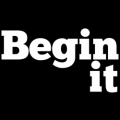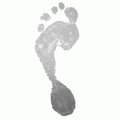Establishing an ambitious set of goals for the season can sometimes feel like an accomplishment in its own right. But setting your goals is only the first step toward achieving those goals. So what’s next?
1. Make those goals a priority

Once you’ve set your goals it’s time to make those goals a priority. That means eradicating those attractive (but inevitably misleading) excuses that derail even the best intentions. The most common excuse: “I can’t/couldn’t find time to fit in all those workouts.” This excuse is attractive because it sounds so plausible, especially given that all of us have busy lives and multiple commitments outside of multisport training. But the problem with the excuse is that you should not be looking to find time for your priorities. To find means to discover something unexpectedly or to perceive it by chance. We don’t do that with priorities; we schedule time for our priorities (which brings us to the second point).
2. Schedule your training
With your goals firmly recognized as a priority in your life, the next step is to devise a schedule that allots time for working on those goals. This means you need a weekly training schedule—which ultimately is guided by your big-picture training plan for the season as a whole. Given the training phase you are in, how many swims, bikes, and runs do you need to do each week? Which days work best for the different types of workouts you need to target? When can you schedule a longer block of time for your long run? When can you realistically get to the pool? When can you manage your brick workout? Sketch out a generic weekly schedule; then use this as a guide to plan your specific workouts each week. The more consistent the schedule from week to week, the easier it will be to follow without the worries of when or how you will get the training done.
3. Guide your training with smaller, concrete goals
Your long term goals need to be broken down into smaller, concrete steps. When you schedule your specific workouts for upcoming weeks, each of those workouts should have a stated purpose. With that purpose in mind, your workout should contain specific and measurable targets—for example, run 3 x 8 minute cruise intervals at zone 4 pace with 2 minutes recovery between. It’s specific because you know exactly the number and intensity of intervals you are trying to accomplish in that workout; it’s measurable because you can record how many (and at what intensity) you did those intervals. You can also target process goals—for example, initiate my running stride from the glutes. Use these different types of concrete goals on both a daily and weekly basis to guide your training.
4. Monitor your progress
Monitoring your progress is important for several reasons, one of which is that it helps motivate you to do the training you set out to do. Merely keeping track of the training you have done will provide inspiration to do the additional training you need to do. This is where a good training log becomes indispensable. And by a “good training log” I mean a training log that you actually use—whether that’s a paper notebook, an Excel spreadsheet or an online training log such as TrainingPeaks. As you observe and record your progress, your goals will remain salient. In addition, the feedback you glean from monitoring your progress will allow you to steer a clearer path toward those long term goals. After all, the journey from the start of the season to the end can be filled with ups and downs—both in training and in life in general. Setting your goals, making them a priority, scheduling time to work on them, breaking them down into smaller steps, and monitoring your progress will keep you on track to achieving those goals.







